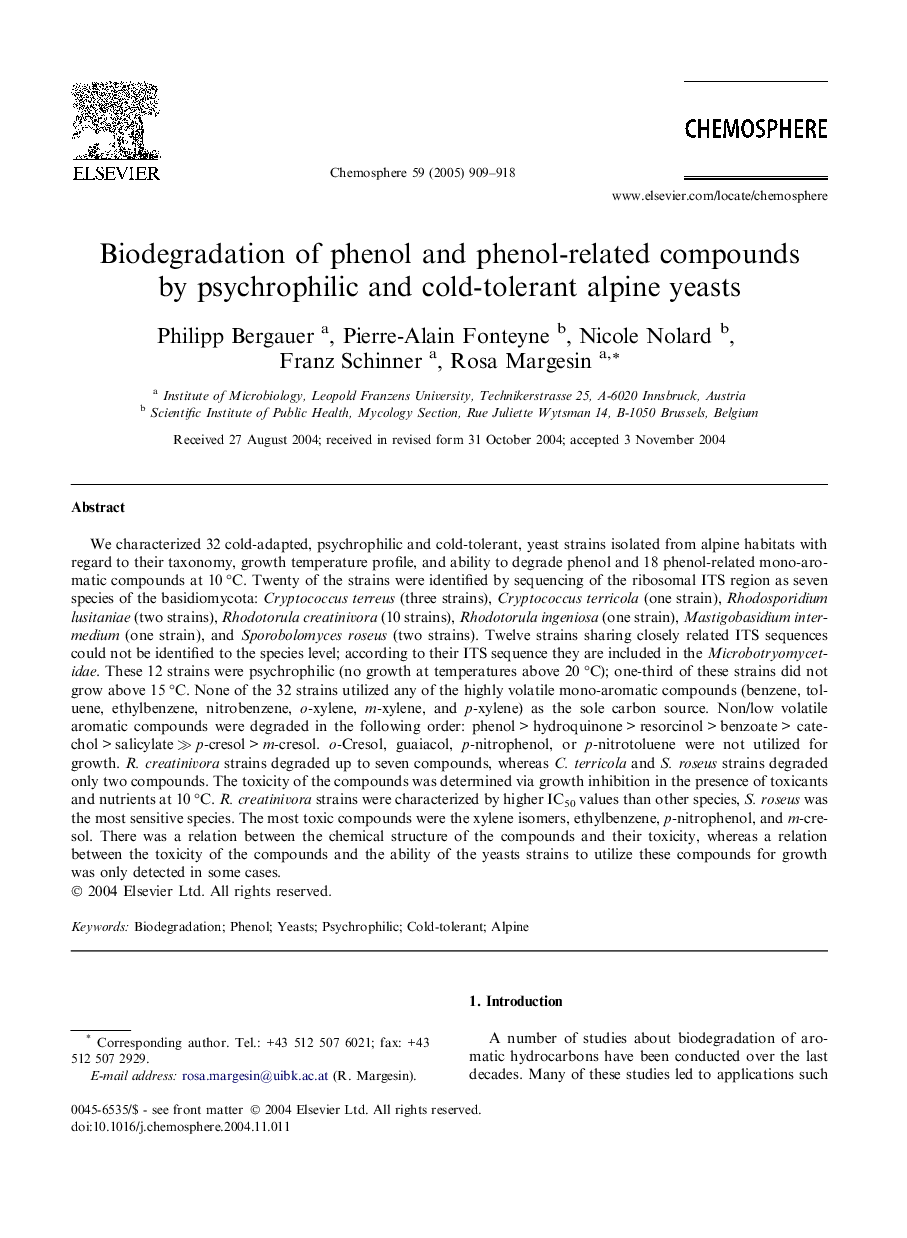| Article ID | Journal | Published Year | Pages | File Type |
|---|---|---|---|---|
| 9451869 | Chemosphere | 2005 | 10 Pages |
Abstract
We characterized 32 cold-adapted, psychrophilic and cold-tolerant, yeast strains isolated from alpine habitats with regard to their taxonomy, growth temperature profile, and ability to degrade phenol and 18 phenol-related mono-aromatic compounds at 10 °C. Twenty of the strains were identified by sequencing of the ribosomal ITS region as seven species of the basidiomycota: Cryptococcus terreus (three strains), Cryptococcus terricola (one strain), Rhodosporidium lusitaniae (two strains), Rhodotorula creatinivora (10 strains), Rhodotorula ingeniosa (one strain), Mastigobasidium intermedium (one strain), and Sporobolomyces roseus (two strains). Twelve strains sharing closely related ITS sequences could not be identified to the species level; according to their ITS sequence they are included in the Microbotryomycetidae. These 12 strains were psychrophilic (no growth at temperatures above 20 °C); one-third of these strains did not grow above 15 °C. None of the 32 strains utilized any of the highly volatile mono-aromatic compounds (benzene, toluene, ethylbenzene, nitrobenzene, o-xylene, m-xylene, and p-xylene) as the sole carbon source. Non/low volatile aromatic compounds were degraded in the following order: phenol > hydroquinone > resorcinol > benzoate > catechol > salicylate â«Â p-cresol > m-cresol. o-Cresol, guaiacol, p-nitrophenol, or p-nitrotoluene were not utilized for growth. R. creatinivora strains degraded up to seven compounds, whereas C. terricola and S. roseus strains degraded only two compounds. The toxicity of the compounds was determined via growth inhibition in the presence of toxicants and nutrients at 10 °C. R. creatinivora strains were characterized by higher IC50 values than other species, S. roseus was the most sensitive species. The most toxic compounds were the xylene isomers, ethylbenzene, p-nitrophenol, and m-cresol. There was a relation between the chemical structure of the compounds and their toxicity, whereas a relation between the toxicity of the compounds and the ability of the yeasts strains to utilize these compounds for growth was only detected in some cases.
Related Topics
Life Sciences
Environmental Science
Environmental Chemistry
Authors
Philipp Bergauer, Pierre-Alain Fonteyne, Nicole Nolard, Franz Schinner, Rosa Margesin,
